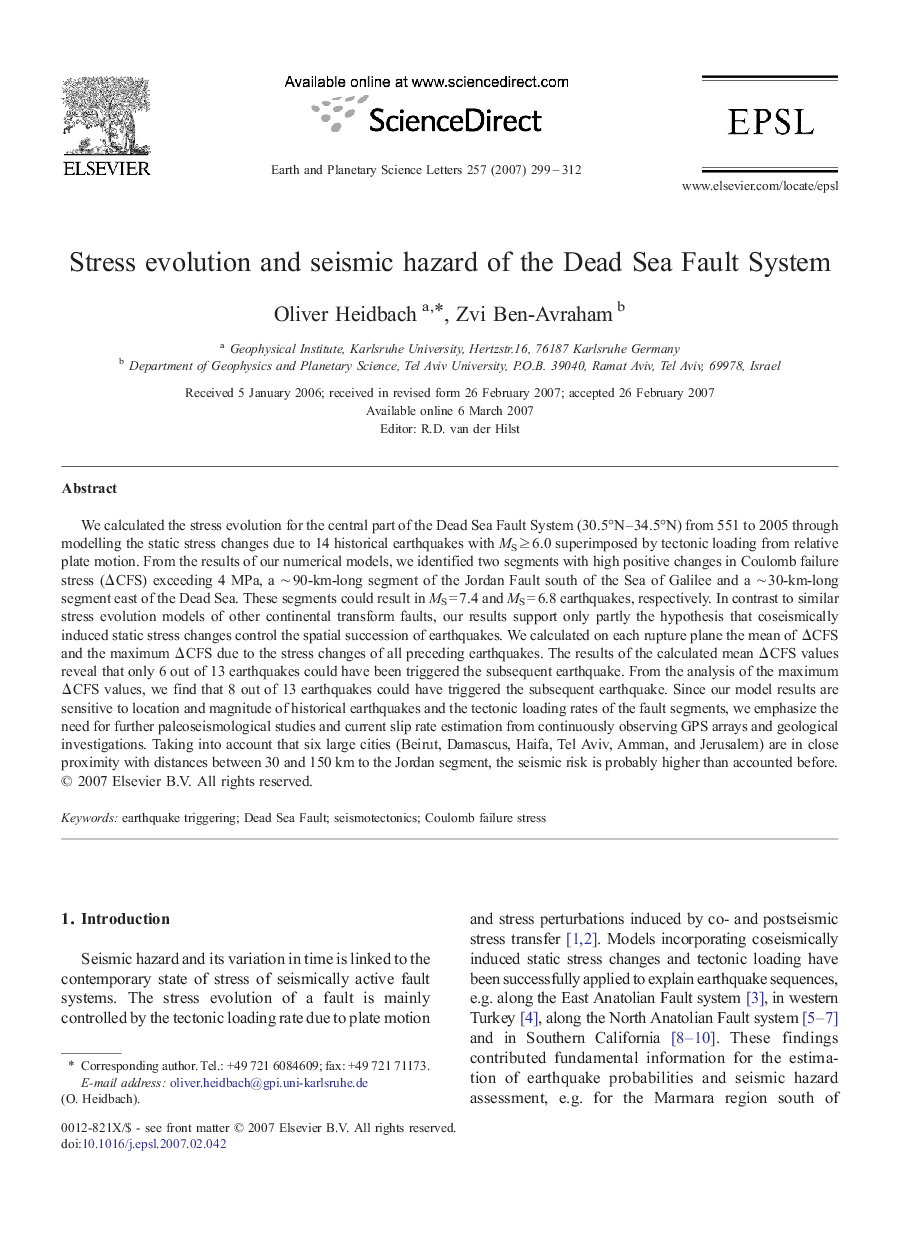| کد مقاله | کد نشریه | سال انتشار | مقاله انگلیسی | نسخه تمام متن |
|---|---|---|---|---|
| 4680513 | 1634921 | 2007 | 14 صفحه PDF | دانلود رایگان |

We calculated the stress evolution for the central part of the Dead Sea Fault System (30.5°N–34.5°N) from 551 to 2005 through modelling the static stress changes due to 14 historical earthquakes with MS ≥ 6.0 superimposed by tectonic loading from relative plate motion. From the results of our numerical models, we identified two segments with high positive changes in Coulomb failure stress (ΔCFS) exceeding 4 MPa, a ∼ 90-km-long segment of the Jordan Fault south of the Sea of Galilee and a ∼ 30-km-long segment east of the Dead Sea. These segments could result in MS = 7.4 and MS = 6.8 earthquakes, respectively. In contrast to similar stress evolution models of other continental transform faults, our results support only partly the hypothesis that coseismically induced static stress changes control the spatial succession of earthquakes. We calculated on each rupture plane the mean of ΔCFS and the maximum ΔCFS due to the stress changes of all preceding earthquakes. The results of the calculated mean ΔCFS values reveal that only 6 out of 13 earthquakes could have been triggered the subsequent earthquake. From the analysis of the maximum ΔCFS values, we find that 8 out of 13 earthquakes could have triggered the subsequent earthquake. Since our model results are sensitive to location and magnitude of historical earthquakes and the tectonic loading rates of the fault segments, we emphasize the need for further paleoseismological studies and current slip rate estimation from continuously observing GPS arrays and geological investigations. Taking into account that six large cities (Beirut, Damascus, Haifa, Tel Aviv, Amman, and Jerusalem) are in close proximity with distances between 30 and 150 km to the Jordan segment, the seismic risk is probably higher than accounted before.
Journal: Earth and Planetary Science Letters - Volume 257, Issues 1–2, 15 May 2007, Pages 299–312